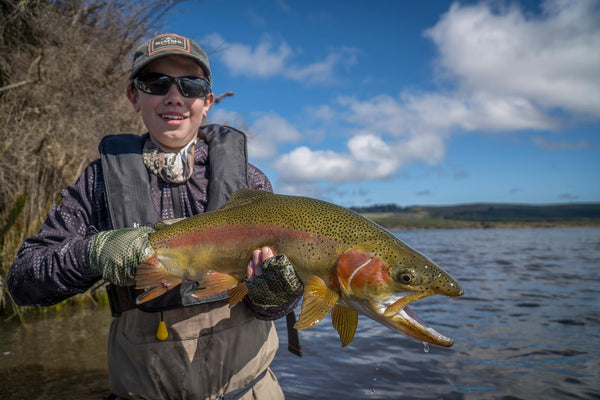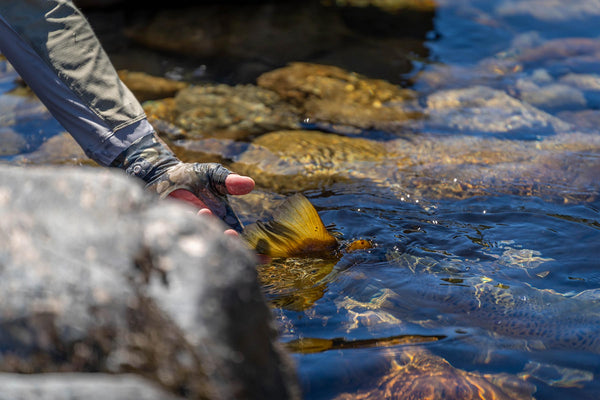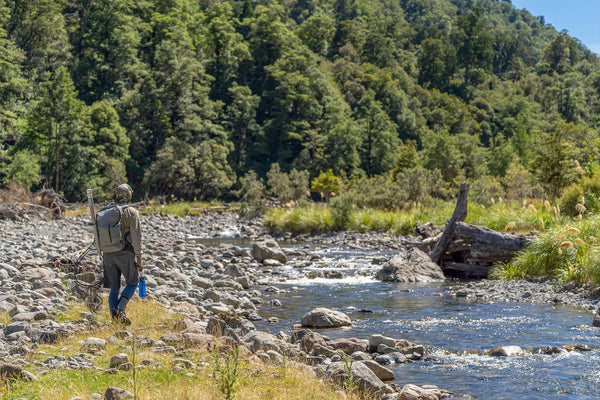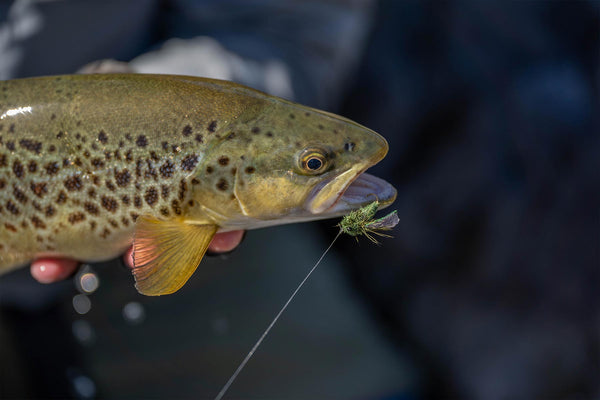Beginner fly rod set ups – a basic rod and reel set to get you started
New Zealand Fly Fishing team member and recently crowned National River Champion, Ollie Basset, is a wealth of knowledge for all things fly fishing. He's also particularly handy when you start learning to fly fish. This article will set you off on the right path to getting your first fly fishing set up.
Buying your first fly rod can be a bit of a confusing and overwhelming experience. If you're new to flyfishing, hearing terms like dry fly rod, euro nymphing rod and spey rod might feel a bit like stepping into a new world. However, getting your first fly rod doesn’t need to be a complicated experience, especially with all the great entry level options available today to help get you started. Firstly I’ll mention a few things that are helpful to understand about general rod design, then I’ll cover a few useful set ups for getting into fly fishing.

Fly rods come in lots of different lengths and sizes which help adapt them to different purposes. This can get quite techy but in general there are two ways in which a rod is described which also help guide fly line choice and reel size. The first is the rod's weight (wt). This refers to the power of the rod and what size line it is suited to, kind of like how in spin fishing you might see ‘light’ or ‘heavy’ and so on. Rods start at light powers like a 1wt and go all the way up to 16 wts or more. The smaller the number before the weight of the rod the less powerful the rod will be - for example a 1wt would be for catching tiny fish and would probably be quite impractical, whereas a 16 wt might be good if you want a super powerful rod to catch Marlin or Mako sharks!
Rod weight is also useful to describe how the overall setup should be constructed including the fly line and reel sizes. Generally, we will match the weight of the rod to the weight of the line, for example a 6wt line on a 6wt rod would cast well because the line would be designed to match that rod and would be able to load it well for a good cast, whereas a 6wt weight rod with a 16wt line would be totally impractical as the line would be much too heavy to cast. Often we will then match the size of the reel with the rod weight, for example a 6wt rod with a 6wt fly line and a 6wt reel size (often these are labeled as 5/6 or 7/8) so the whole setup will function to the best of its capabilities. In NZ trout fishing rods are usually between 3wt to 7wt, with a 5wt or 6wt being standard.

The second aspect of a fly rod that's important to consider is its length. With a shorter rod it will be more difficult to achieve distance with your casts, whereas a longer rod will act as more of a lever to cast further. A shorter rod will be beneficial in really tight overgrown streams, whereas in more open environments a longer rod which will help cast a little further could be helpful. In general, fly rods used in NZ are between 8 and 10 feet, with some shorter and longer options available for speciality type techniques or scenarios. A 9ft rod would usually be considered as standard.
Now that I have described a few of the ways rods are described (weight and length), I’ll talk about a few different setups to consider when buying your first fly rod. The first thing to think about when choosing a set up is where you are hoping to go fishing and what sort of fly fishing you’d like to do.

Fly rods and associated tackle are designed for different purposes, kind of like the different clubs available in golf for playing different shots. Now I don’t play golf, at least not very well, but I’m going to (attempt to) compare how each rod might be a bit like a different type of golf club designed for a specific shot or type of fishing.
So let's say you are going to fish rivers around Taupo and Rotorua, or maybe a bit of backcountry fishing, really a bit of everything from indicator nymphing to dry fly - you are going to need some sort of general purpose club. A really good general purpose fly rod setup for most NZ fishing scenarios is a 9’ 6wt. This will be able to handle fishing for big NZ trout with many different techniques from heavy indicator nymphing in the winter, to sight fishing with a dry fly to a rising fish in the summer.

When I first got into fly fishing I bought a 9’ 6wt entry level set up from my local shop and it served me really well around the North Island where I live. If you think you will be fishing smaller smaller streams or backcountry more often than the bigger faster rivers, you might want to consider a 9’ 5wt. This is still very general purpose, but a little bit more delicate and suited for South Island type fishing for spooky fish.
Either option is a good bet for a do it all type set up - remember to match the fly line size and reel size to the rod. Luckily all Manic Tackle dealers offer combo type set ups with a matching rod, reel and line designed to work well together. While you can use these general purpose rods in a lot of different situations, sometimes a slightly more specialised set up could be useful to make life a bit easier on the water.

Now if you live next to a small stream where you will mainly fish for small fish, maybe with dry flies, you might want to consider a ‘putter’ type rod designed for this sort of delicate close range fishing. For this sort of fishing a 9’ 5wt would be ok, but a setup that would be better for the task would be a shorter rod with a little less power which will be easier to fish in tighter environments and would offer a more delicate presentation. For this sort of fishing a good set up would be a 8ft 3wt or 4wt, designed for casting lighter lines at short distance. This sort of fishing is really good fun, especially in the summer months when fish are willing to eat off of the surface. Again, match the line weight to the rod, along with a smaller 3/4wt type fly reel to complete the setup.
The final setup that I’ll discuss is a ‘driver’ type setup designed for casting greater distances that would be really useful for those mainly looking to fish some of the many great fly fishing lakes we have in NZ. Similarly, a 9’ 6wt would be ok for this, but a slightly more specialist setup will make life easier. In this sort of fishing you often want a rod that will facilitate distance casting so more water can be covered. Given that space for casting is less of a consideration a longer rod can be helpful, along with a more powerful rod (greater line wt) to help handle the bigger fish and cast further. For this sort of fishing, I’d recommend a 10’ 6wt or 7wt with 7wt fly lines and a matching reel.

Primal rods cover all these variations, the marketing team will probably put a link here to all the range.
These three general purpose type set ups are just a few of the many options available, with other specialist type rods available for different techniques such as Euro nymphing, Saltwater fly fishing or Spey type swinging techniques. If you are interested in these techniques check out some of the useful related articles on the Manic Tackle Project blog. Happy fishing!
ABOUT OLLIE:
Ollie Bassett is a current New Zealand fly fishing team member and Fly Fishing Instructor
All images: Andrew Harding
